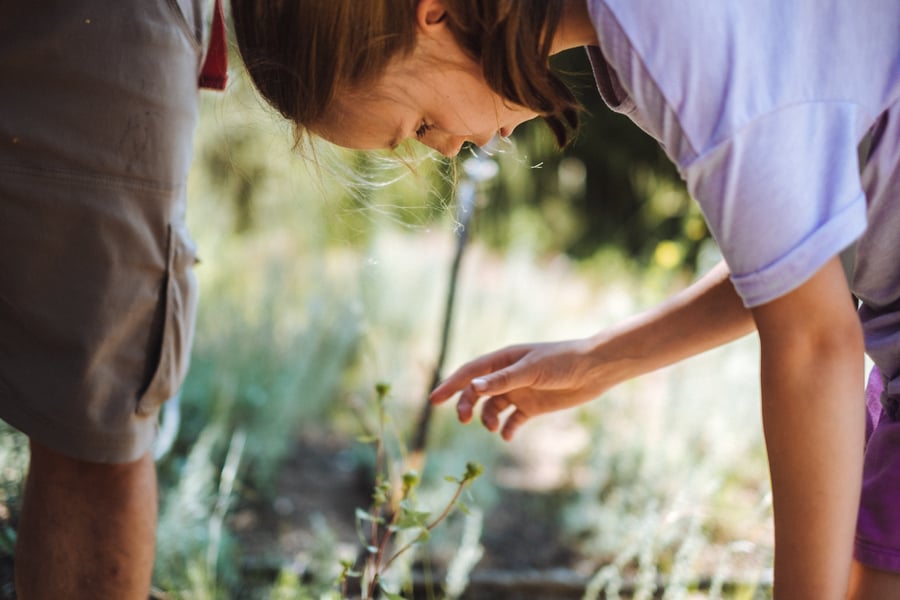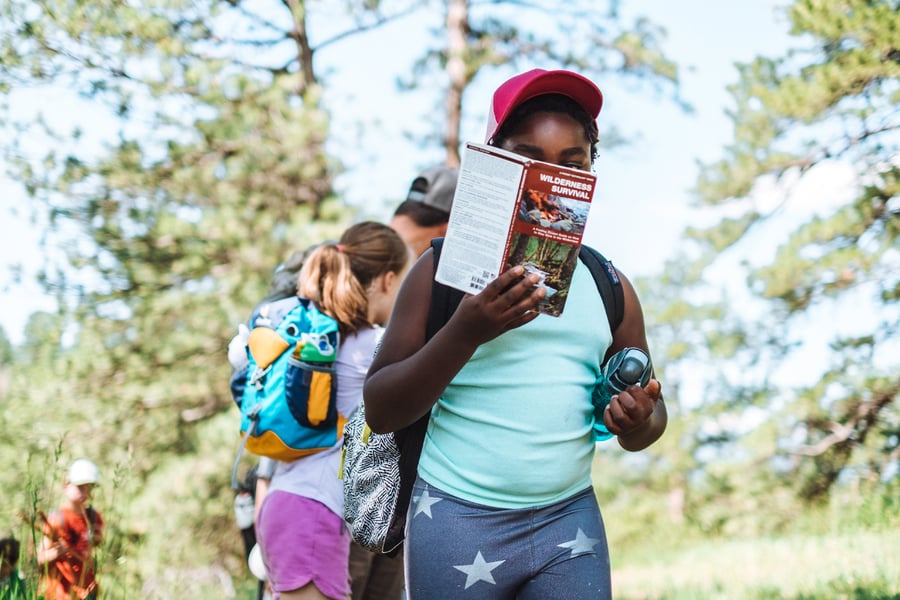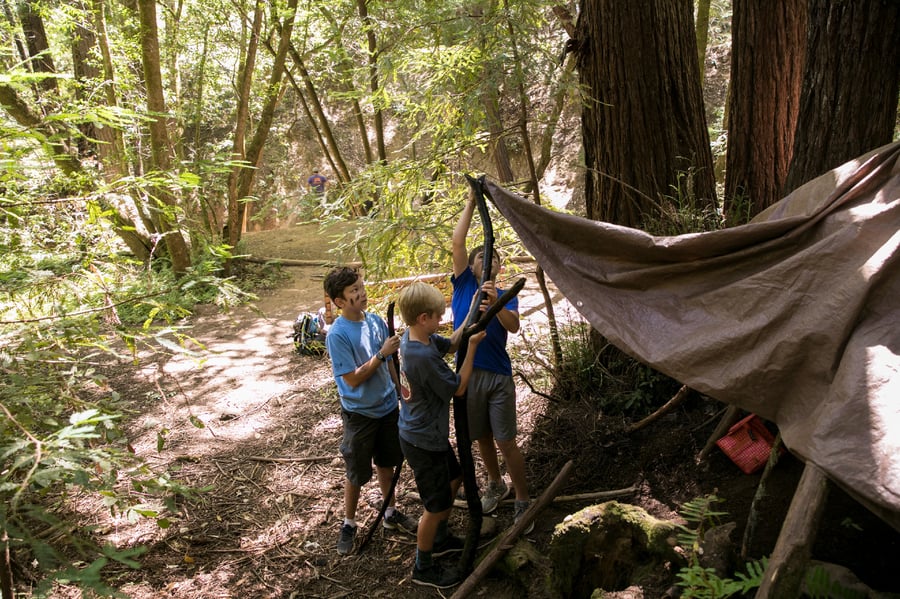When you read about the other summer day camps that Avid4 offers, they sound pretty self-explanatory. Rock climbing campers go rock climbing. Those signed up for whitewater kayaking or SUPing go paddling. But what exactly is survival skills camp? Quite simply, it’s about empowering kids to not only feel comfortable outdoors, but to thrive there as well. Plus, survival skills camp teaches campers how, with some knowledge, they can create their own tools and solve problems. Here’s everything you need to know about survival skills camp at Avid4 Adventure.
Plant and Animal Identification
If you look at the skills progression information for survival skills camp, one of the things it talks about is plant and animal identification. Think about it for a moment. Have you ever been hiking and wondered what that plant was or whether those tracks in the mud were made by a dog, or a coyote? With survival skills camp, we want campers to be able to identify these things in nature. In Colorado, learning how to identify a Ponderosa pine tree is always fun. That’s because, when you sniff the bark, it smells like peanut butter or butterscotch! In survival skills camp, all of your child’s senses are used to learn more about and understand nature.
Building a Shelter
Another skill taught in survival skills camp is constructing a shelter. Shelter-building is an important skill to know because you can protect yourself from inclement weather. That means there’s less of a chance of developing hypothermia. We teach two types of shelters. The first is constructing shelter from a tarp. This isn’t as easy as it sounds! It requires knowing which trees to use (live ones are better than dead!) and understanding where in nature to construct a shelter. For example, do you think it would be best to build a shelter at the top or bottom of a hill or mountain? Near a river or far away? Are pine or deciduous trees best? In addition, the kids must know how to tie knots to attach the shelter to both trees and anchors. Some of these include:
- The taught-line hitch
- The clove hitch
- Square knot
- Bowline
Once kids have demonstrated they can build a tarp shelter, they then construct one out of natural materials. This teaches them how to identify and utilize resources that are readily available in nature. As part of our Leave No Trace ethic, we also teach the campers how to harvest materials responsibly, as well as disperse those shelters when done so as not to leave an impact.
Knowing Where You are and Where to Go
Part of the curriculum of survival skills camp includes basic familiarization with how to use a map and compass. One important skill is knowing the four cardinal directions (North, South, East, West), how you can tell the difference between them and how to find them correctly using a compass. Another is identifying the parts of a map and what all those symbols and lines mean. Kids learn to orient themselves by syncing up their compass with a map. Plus, the instructors are teaching these topics in a way kids will understand. That way nothing goes “over-their-head.”
Creating Fire Responsibly
For sure, one of the coolest skills that we teach at survival skills camp is fire-making. Campers learn which materials in nature are useful for both starting and maintaining a fire. Tinder, kindling, and firewood are all important parts of the process. To light the fire, the kids can practice using a magnesium striker, which creates sparks that can land on petroleum jelly-soaked cotton balls. A more challenging and advanced method is making an ember with a friction fire set, such as a bow drill. This is something that they may have seen on TV, but never imagined that they could do in real life! Of course, safety is paramount. Instructor supervision, using metal pans to create fire and being mindful of fire bans are key for both the safety of participants, as well as minimizing impact the area we are traveling.
Not so serious
As with every adventure at Avid4, fun is a given and always a part of the experience! For example, there’s the “build a raft” activity. This is where campers build small rafts out of sticks and grass. Then, we float them on creeks, rivers or streams to see who can stay afloat. It’s always neat seeing kids watch their projects actually float downstream. There are also summer camp games, riddles, jokes, and other activities that are sprinkled-in throughout the day to keep campers engaged and excited about being outdoors.
There are many different pieces to survival skills camp. Like any Avid4 program, it combines outdoor skills, a respect for the outdoors and practicing Leave No Trace principles, and fun to create memories that will last long after the summer is over.
To see survival skills camps available near you at Avid4 Adventure, click the link below.





 Login
Login
 Store
Store
 Help Center
Help Center
-1.jpg)










